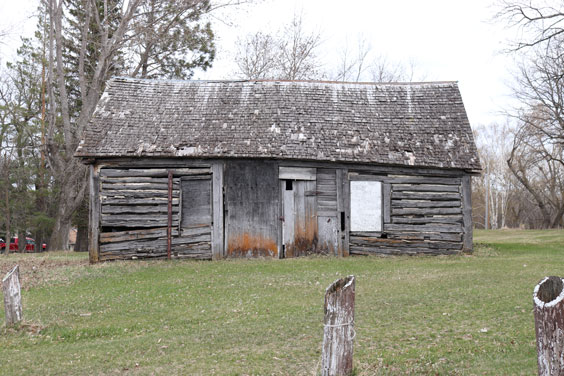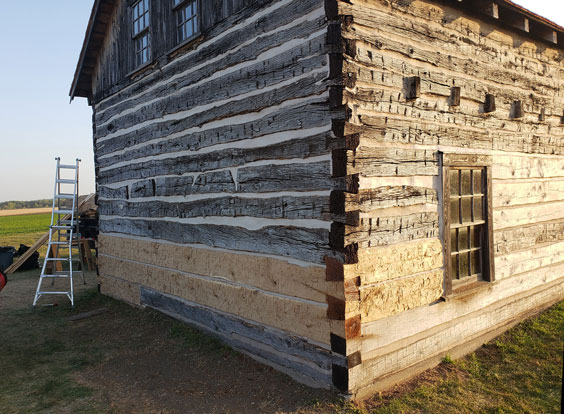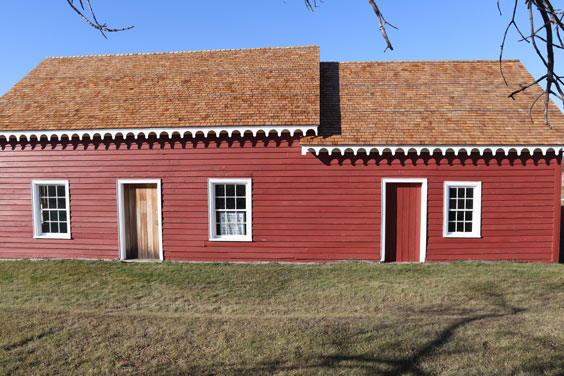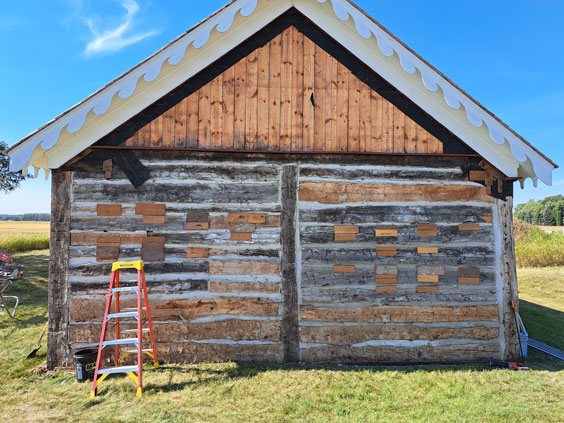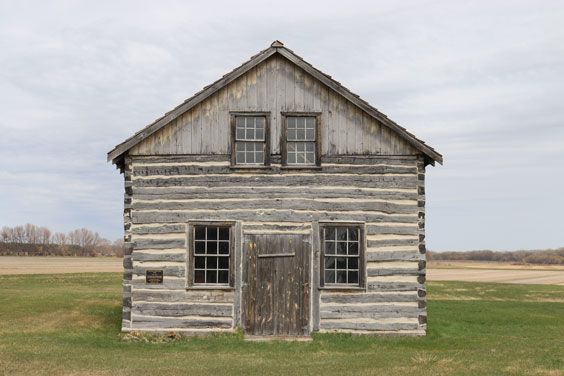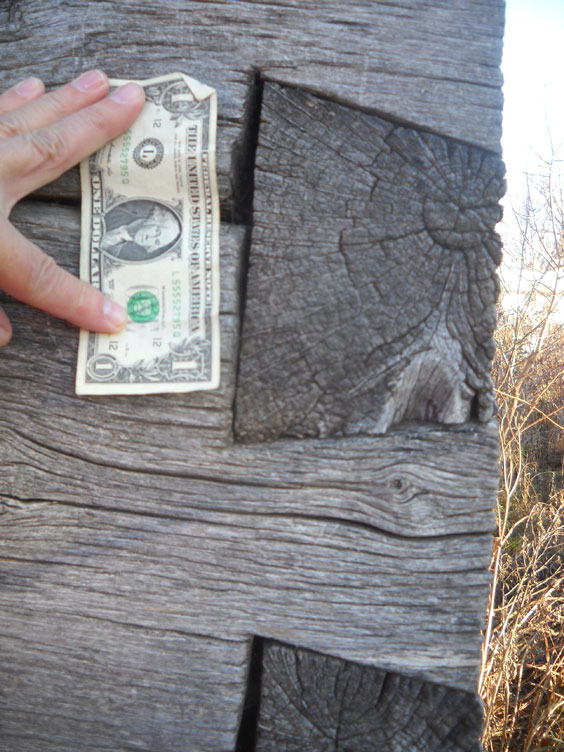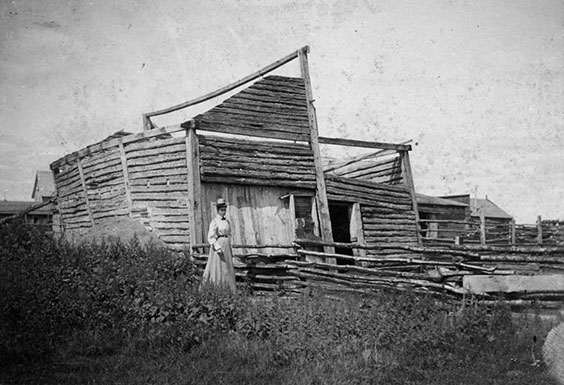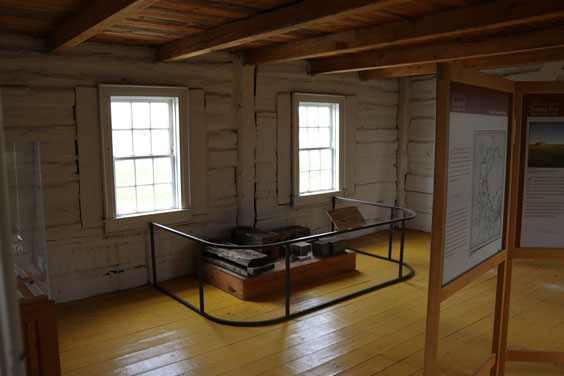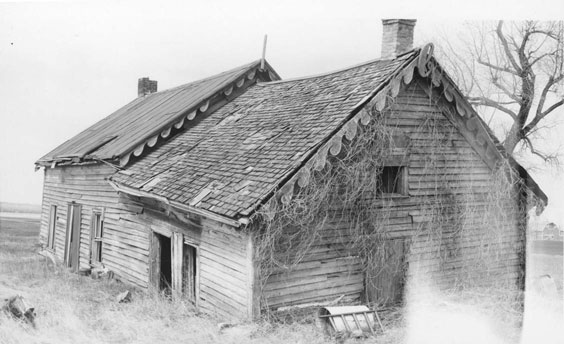Interns Explore a Multitude of Resources at the State Archives: Part I
Elizabeth Acheson, Library Processing Intern
Hi! I’m Elizabeth, and I interned in library processing this past summer at the State Archives. The State Archives contains all sorts of resources related to North Dakota, including materials such as manuscripts, photos, books and print publications, oral history records, and digital media records. As a library processing intern, I assisted with various projects involving published materials.
One of my favorite projects from this summer included processing some materials that were being transferred from a different section of the Archives (e.g., manuscripts or photos) to the publications section. One of these collections included the papers of Harry E. Polk (1887-1971). Polk was an editor and owner of the Williston Daily Herald and served as the state director and president of the National Reclamation Association for North Dakota. (You can learn more about him and his materials in the Archives here.) Many of the materials within Polk’s collection concern water management and the Garrison Dam project, a system that was proposed and built in the mid-20th century. The Garrison Dam project was and remains a major factor in North Dakota water management and daily life, and the pros and cons of its building continue to be the subject of debate.
Learning about this event in my college course on North Dakota history gave me a basic understanding of the topic and sparked my interest in discovering more about it. But looking through the various papers, essays, and publications related to water management and the Garrison Dam project gave me a deeper understanding of its full implications.
This is just one brief example of the way the materials within the State Archives can be of use to historians who wish to delve into the history of a subject beyond what a school textbook offers. By preserving and categorizing these materials, the Archives makes historical documents of the past available for use in the present and future.
Kristi Carpenter, National History Day Intern
This summer, I was the National History Day intern at the State Archives. National History Day allows middle school and high school students to create a project on a history topic they find interesting for local and nationwide competitions. It was my job to find those unique areas of documented history and condense them into a guide for these students, and potentially other researchers, to use.
As a University of Jamestown student studying political science with plans to attend law school, I applied for this internship because I like to write and do research. Though I had taken North Dakota history in high school, I had never participated in National History Day and at first had only a very basic understanding of how my research would be used. Our state’s history is known because people took the time to document it. Some of those documents ended up in the collections of the State Archives. I compiled lists of these resources on historical topics into an easy-to-use PDF file. Middle and high school students will eventually be able to access these files for their National History Day projects.
As I gathered this initial research, I learned so much. Every day at my internship, I discovered something I hadn’t known about North Dakota. Some of my favorite finds introduced me to areas of North Dakota’s history that were new to me. One collection contained newspaper clippings about North Dakotan David Henderson Houston. He invented a new type of camera film and sold it to the owner of Kodak. Another collection contained photographs taken by Nancy Hendrickson. As an adult, Nancy used her family homestead as a photographic studio, and her photos were published across the country. Many of her subjects are animals dressed as people. Another interesting collection contained transcripts of letters Theodore Roosevelt sent during his time in North Dakota. I also took an interest in the North Dakota Constitution. A major highlight of my internship was seeing the document in person. The State Archives holds the original, handwritten state constitution, which was created and signed in 1889. This same constitution is still in use despite a failed attempt to rewrite it in the 1970s.
North Dakota history topics are extremely fascinating. I hope that students and all researchers will find these National History Day guides useful!


